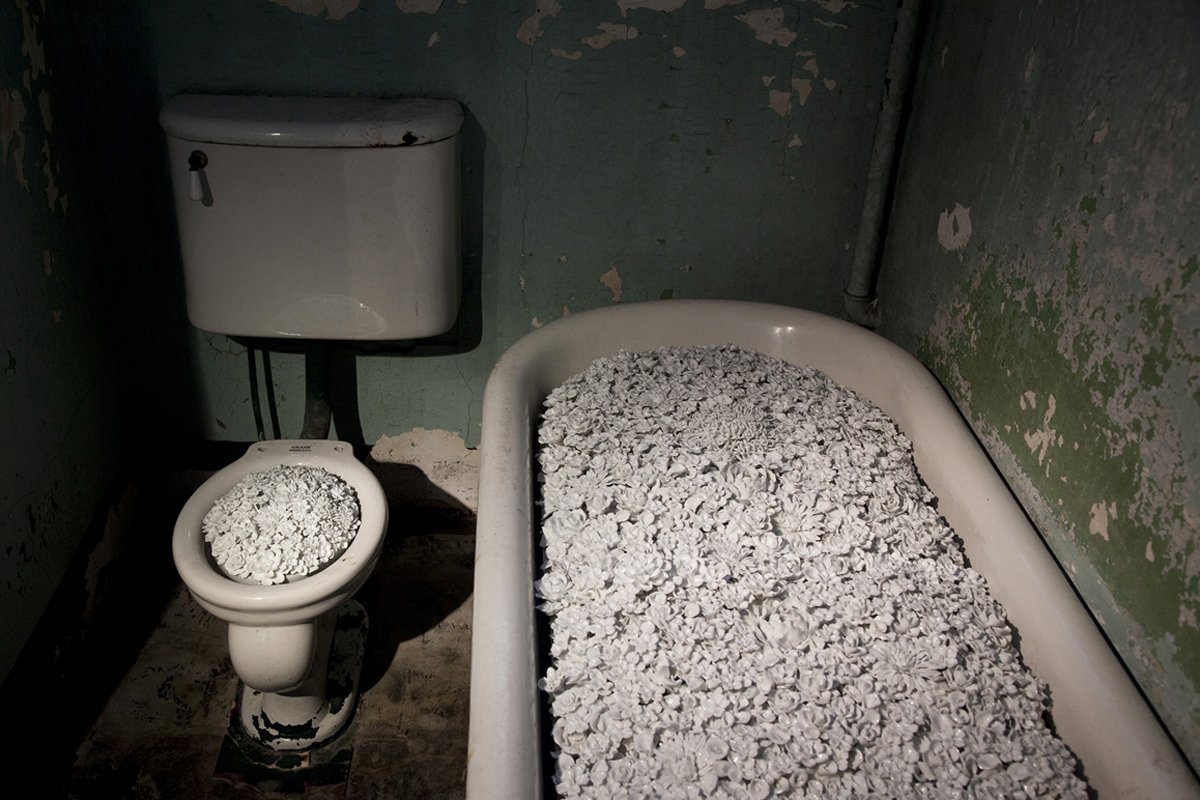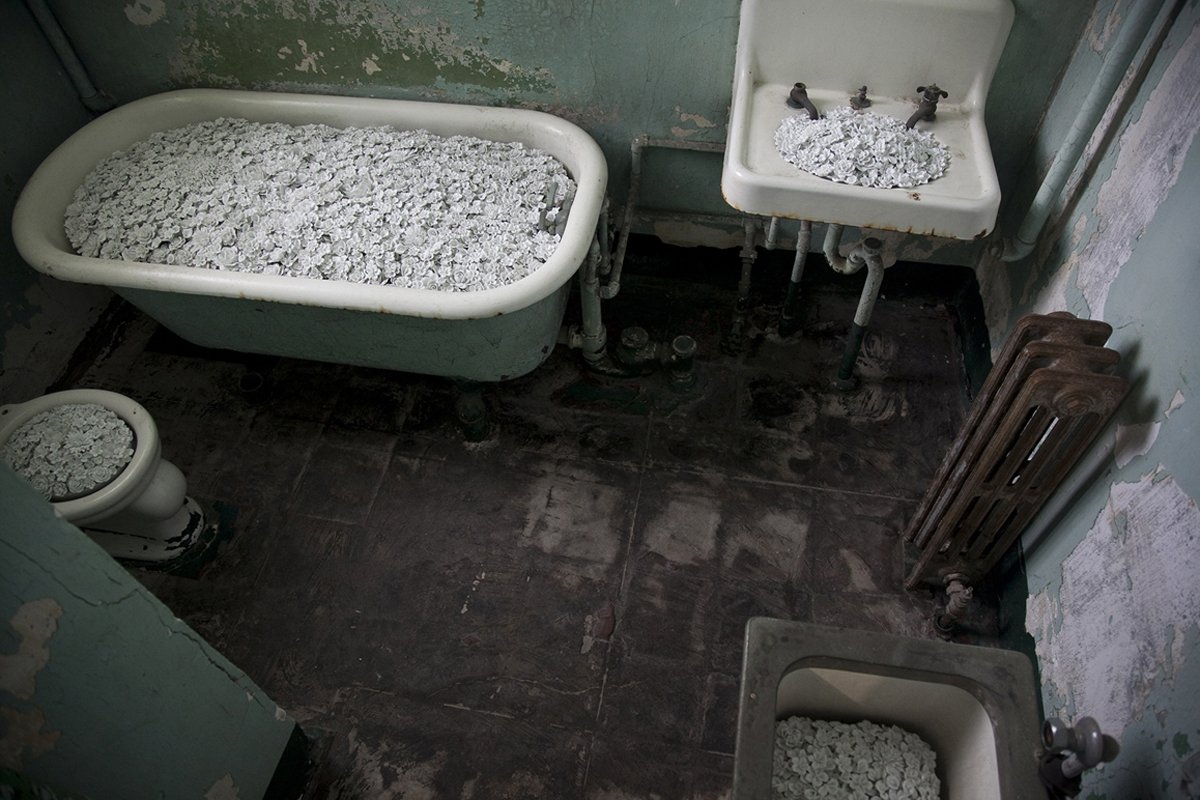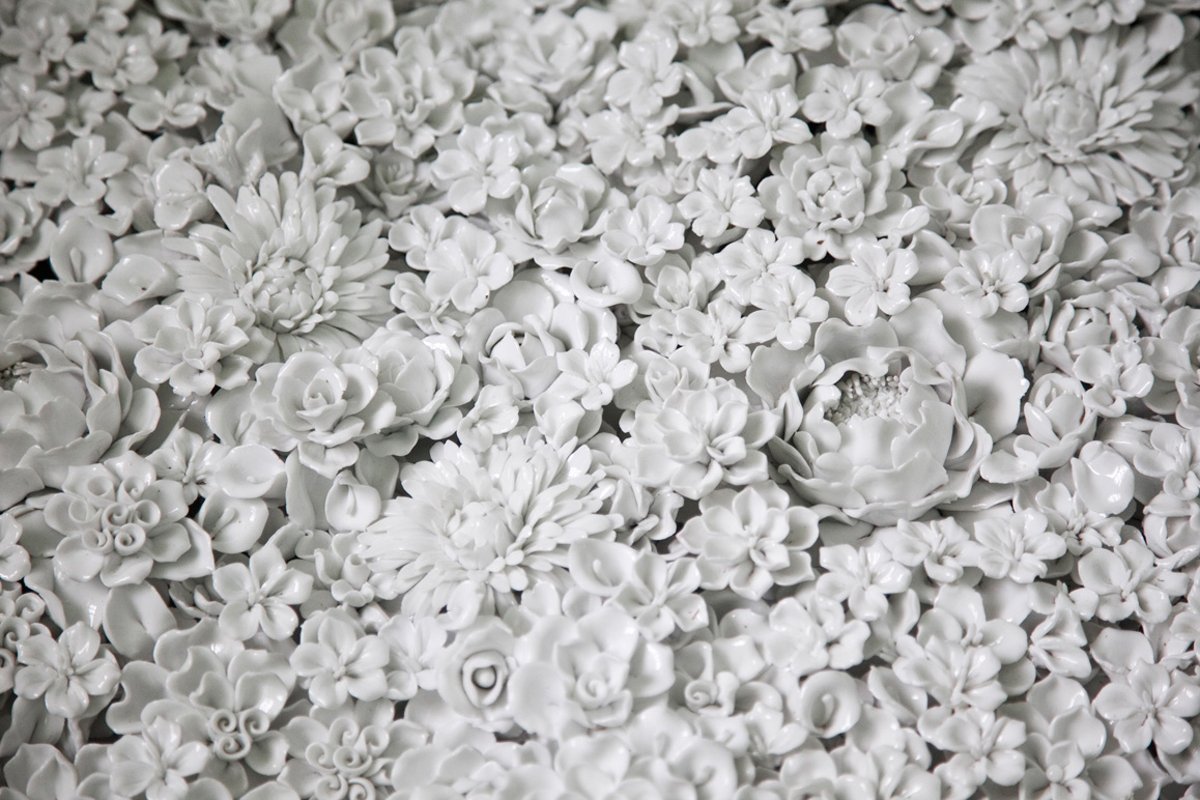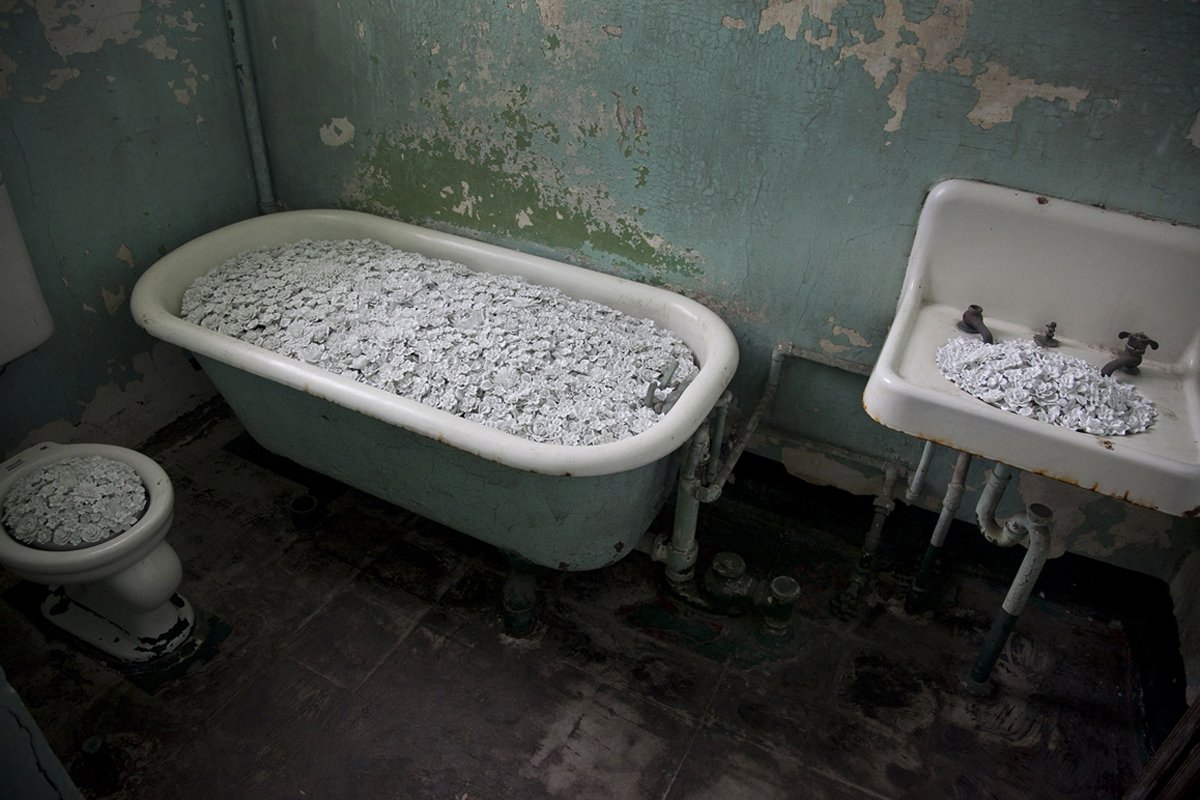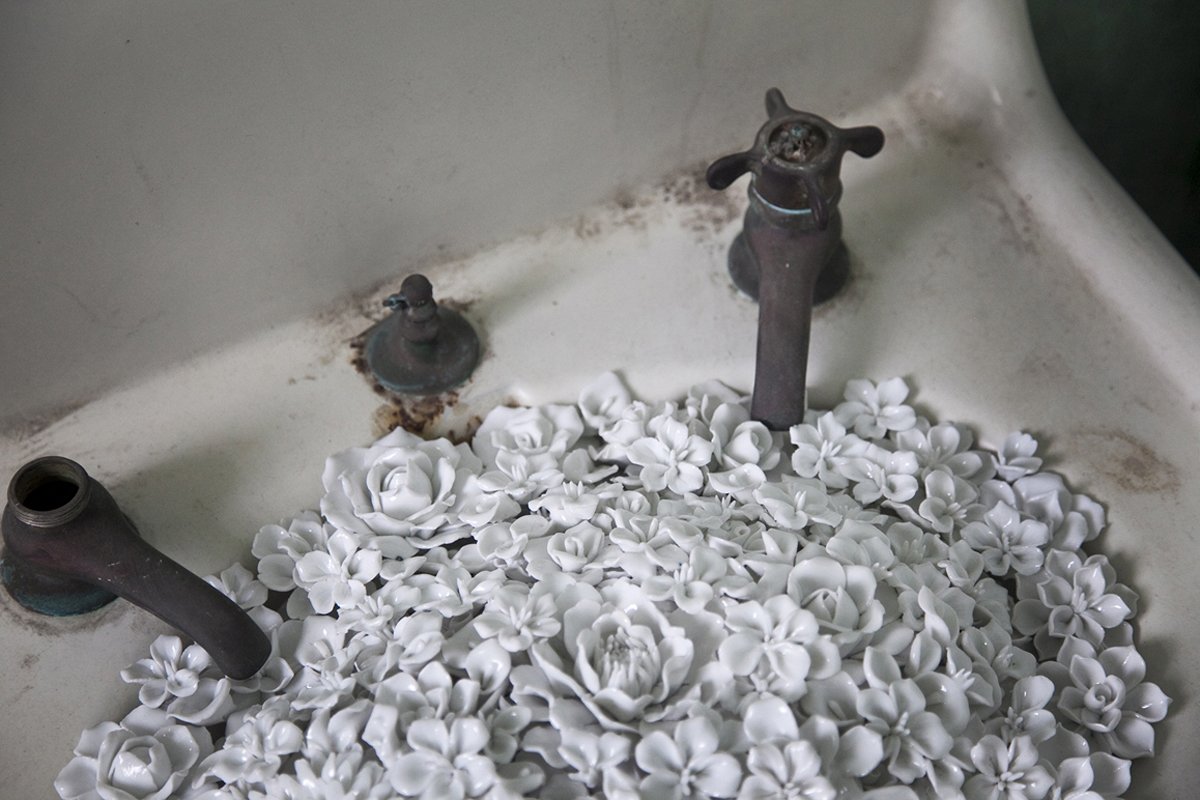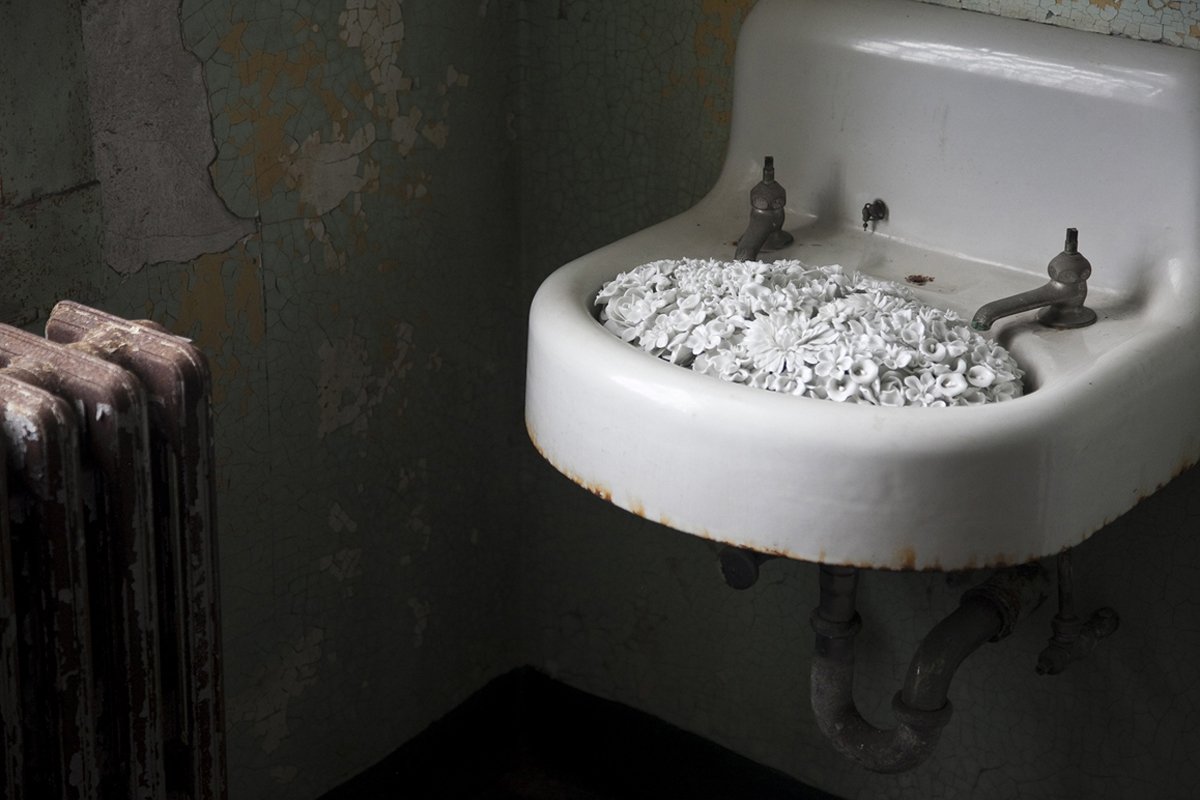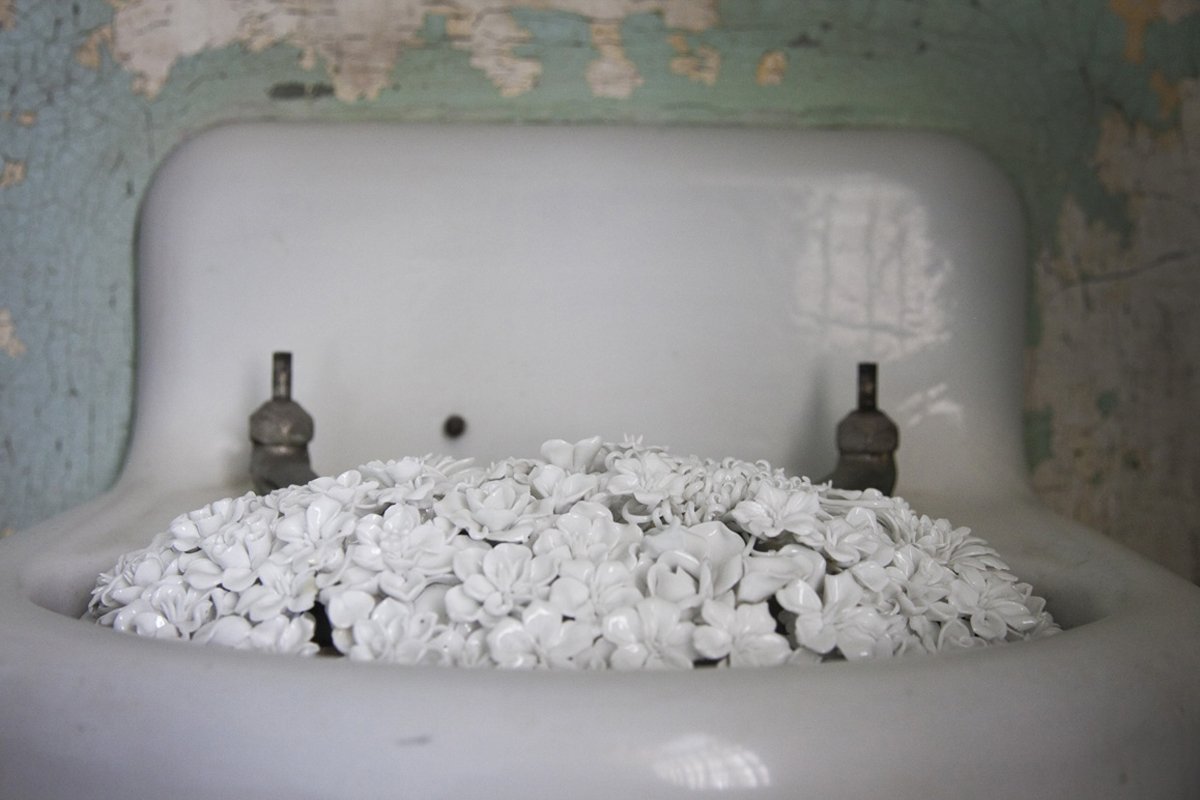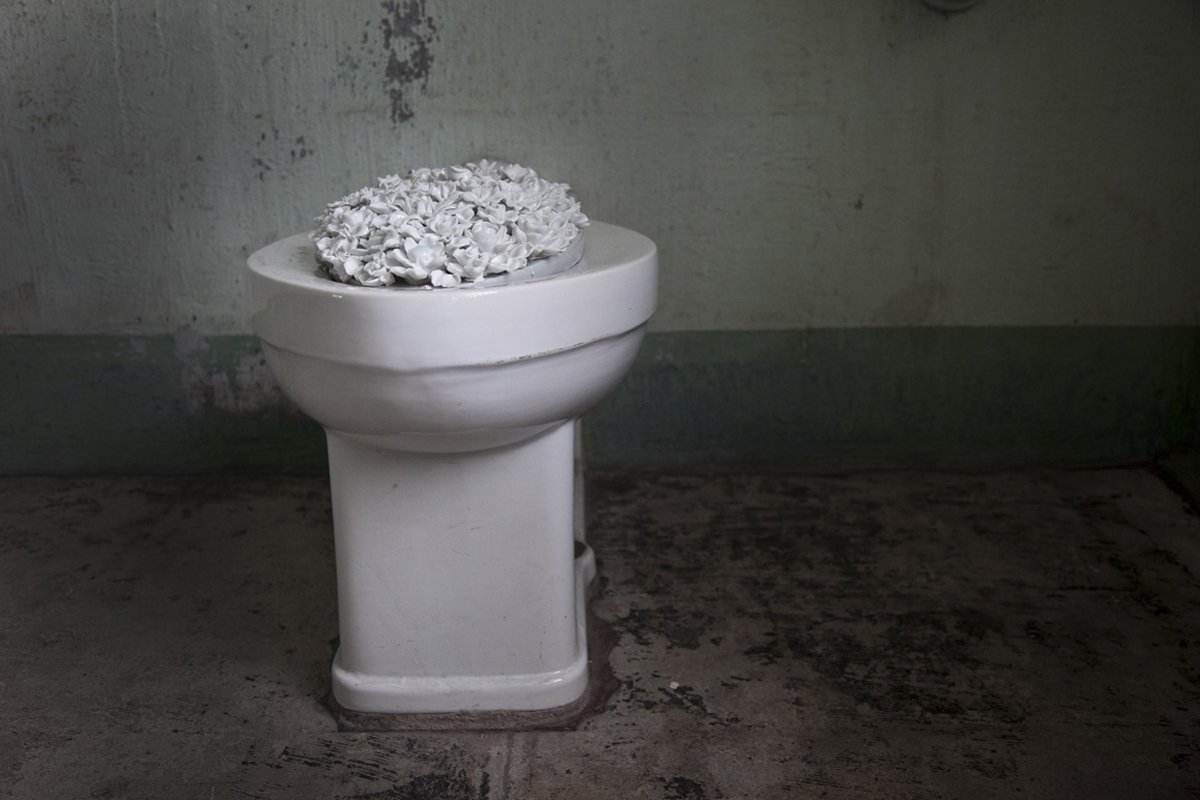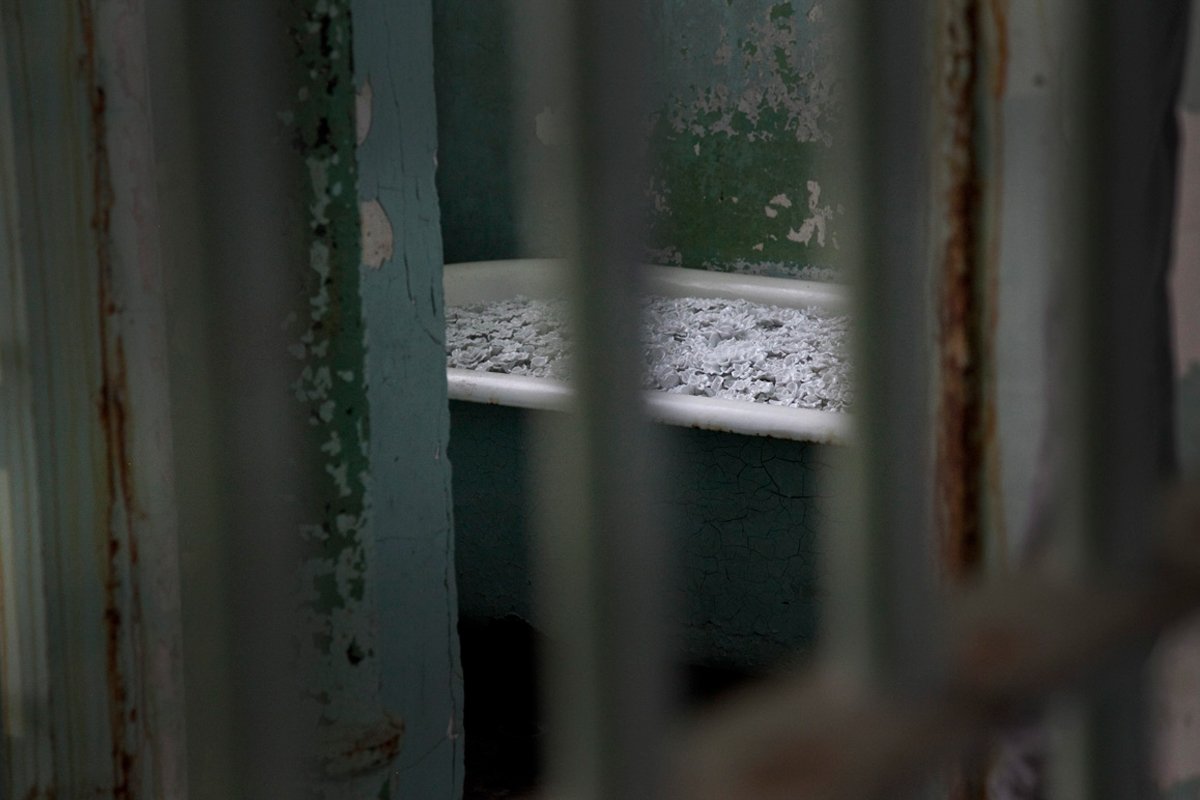“Blossom” is part of Ai Weiwei’s latest, the @Large exhibit on display at Alcatraz. Displayed in a medical wing bathroom, the installation draws viewers into one of the most rudimentary sections of the former prison.
This space is transformed by Ai Weiwei’s addition of ceramic flowers, which brim from the sink, bathtub, and toilet. Echoing traditional Chinese iconography, the flood of poppies responds to the poem “Let a hundred flowers bloom / Let a hundred schools of thought contend.” Both the artwork and the poem refer to China’s Hundred Flowers Campaign, a period in which the government sanctioned free expression.
Knowing that Weiwei was detained for 81 days in 2011 and is currently forbidden to leave China, this imagery is especially moving. He did not see Alcatraz in person, instead creating the pieces from the cell of his Beijing studio. Hence, his flowers represent a struggle for freedom that is at once personal, universal, and ongoing.
The poppies also stand for the resilience of the human imagination, the opiate quality of beauty, and the horrors of war. Like the “Blood Swept Lands and Seas of Red,” a living memorial at the Tower of London, Weiwei’s installation is made up of 888,246 blooms, one for each British and colonial citizen slain in WWI. Thoughtfully layered and politically charged, “Blossom” offers viewers many entry-points into the artwork and the global history of oppression.
Photography by Jan Stürmann


